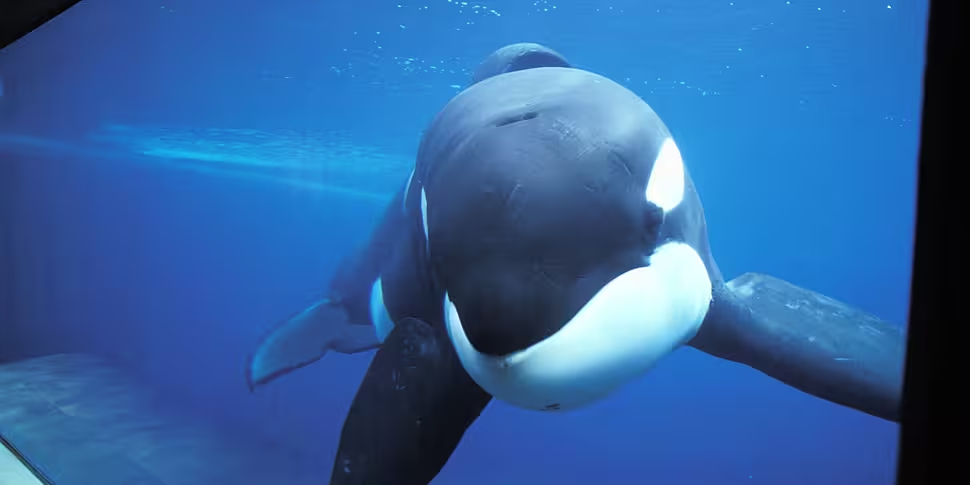The whale who was featured in the 1993 film Free Willy has “never found his family,” 30 years on from the movie's release.
While Willy sailed off into the sunset at the end of the movie, the same could not be said for Keiko, the whale who played him.
His life was detailed in an article in The Guardian this week by Wildlife and Conservation journalist Melissa Hobson.
On Moncrieff today, Ms Hobson said Keiko was born in Iceland around the 1970s before being taken from his mother at two years old.
“The film generated everyone’s interest in his life,” she said.
“Kids around the world came to see the movie and afterward thought about what happened to this whale in captivity.
“Then they started contacting Warner Brothers to find out more about it and that’s when everyone realised that Keiko, who played the whale in the movie, was still actually in captivity and performing in Mexico.”
 Keiko pictured with a trainer in Norway in 2003. Image: Associated Press / Alamy Stock Photo
Keiko pictured with a trainer in Norway in 2003. Image: Associated Press / Alamy Stock PhotoWhen the public discovered the real-life Free Willy was still in captivity, a successful campaign for his release ensued, according to Ms Hobson.
“He was in his late teens or early 20s by the time the film came out so had lost a lot of his instincts and his release had to be taken in stages,” she said.
“Initially they got him from Mexico City to Oregon where they built him a specialised enclosure that was bigger and where the water was colder.
“He’s from Iceland so he likes cold water, when he was in Mexico he was quite poorly.”
Building strength
Ms Hobson said he then spent “a couple years” in Oregon fighting off diseases he had acquired in Mexico and building up strength, before a return to Iceland.
“That involved a special crane that did the whole journey and re-fuelled twice in flight with Keiko on board in a shipping container filled with ice water,” she said.
“When he got to Iceland, you can’t just let an animal like this go and expect it to be able to fend for itself, so they built a specialised seaside sanctuary.”
Live food
There they had to train Keiko to eat live food, according to Ms Hobson.
“In performances, he was used to fetching items so initially when they got him to catch live fish, he would bring it back to the trainer expecting it was what he was supposed to do,” she said.
“They also taught him to follow the boat out into the open ocean to build up stamina so he could keep up with the distances needed to join an orca pod in the wild, as they can swim up to 100km a day.”
Sad ending
Once he was released, the famous whale never found his family or a wild orca pod to accept him as their own.
“He never found his family,” she said.
“His mother may very well have been alive when they first brought him back to Iceland because female orcas live into their 90s but they weren’t able to trace her.
“He did have some interactions with wild orcas, which he wasn’t able to have in captivity, but didn’t join an orca pod himself sadly.”
Keiko found his way to a fjord in Norway before he died from pneumonia in 2003.
There are currently over 3,600 whales and dolphins in captivity around the world – of which 56 are believed to be orcas.
You can listen back here:
Main image: Keiko in the Oregon Coast Aquarium. Image: Ingram Publishing / Alamy Stock Photo









